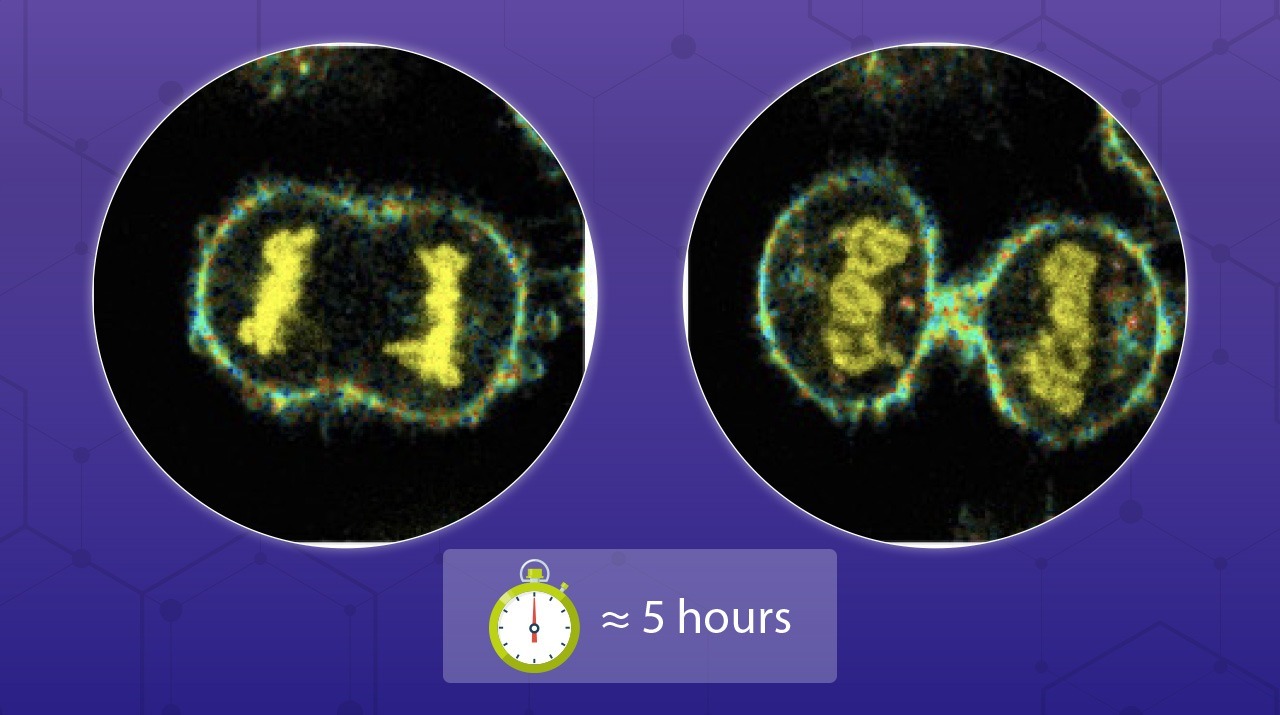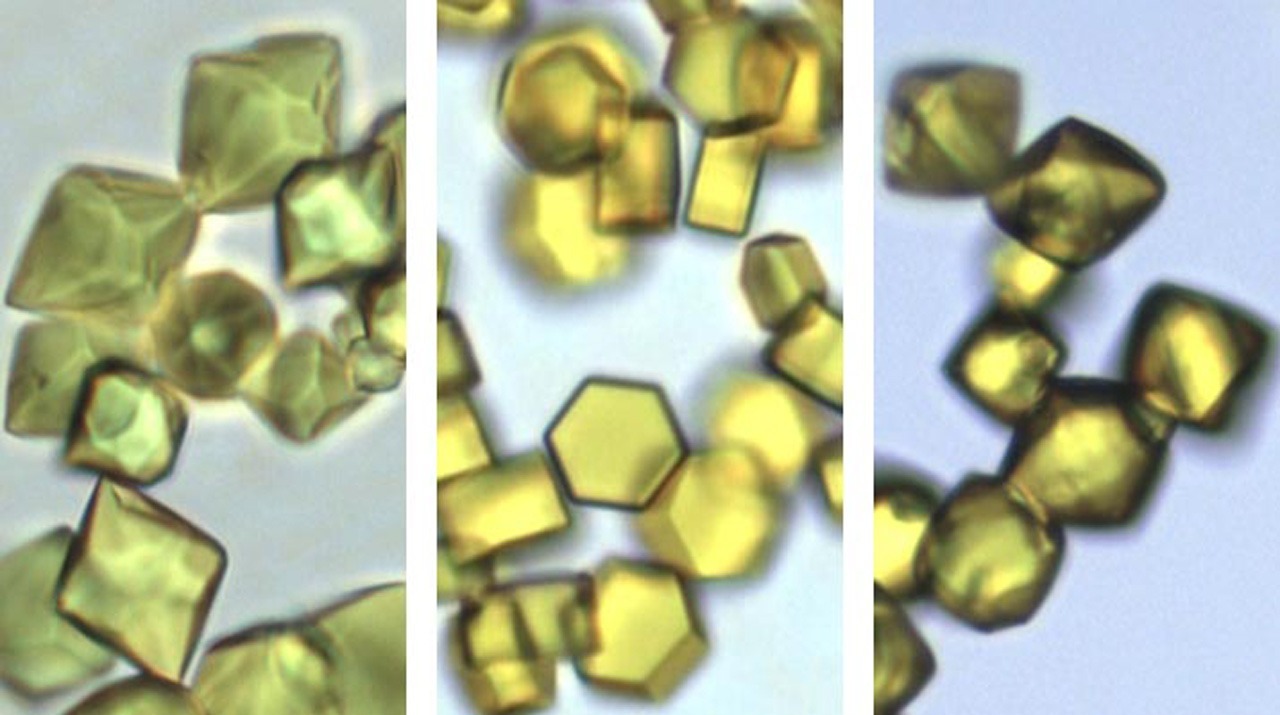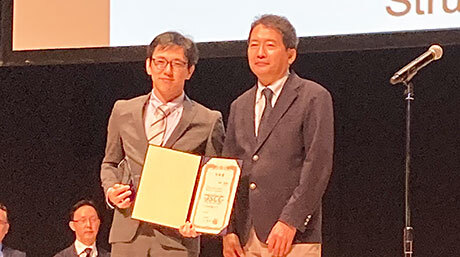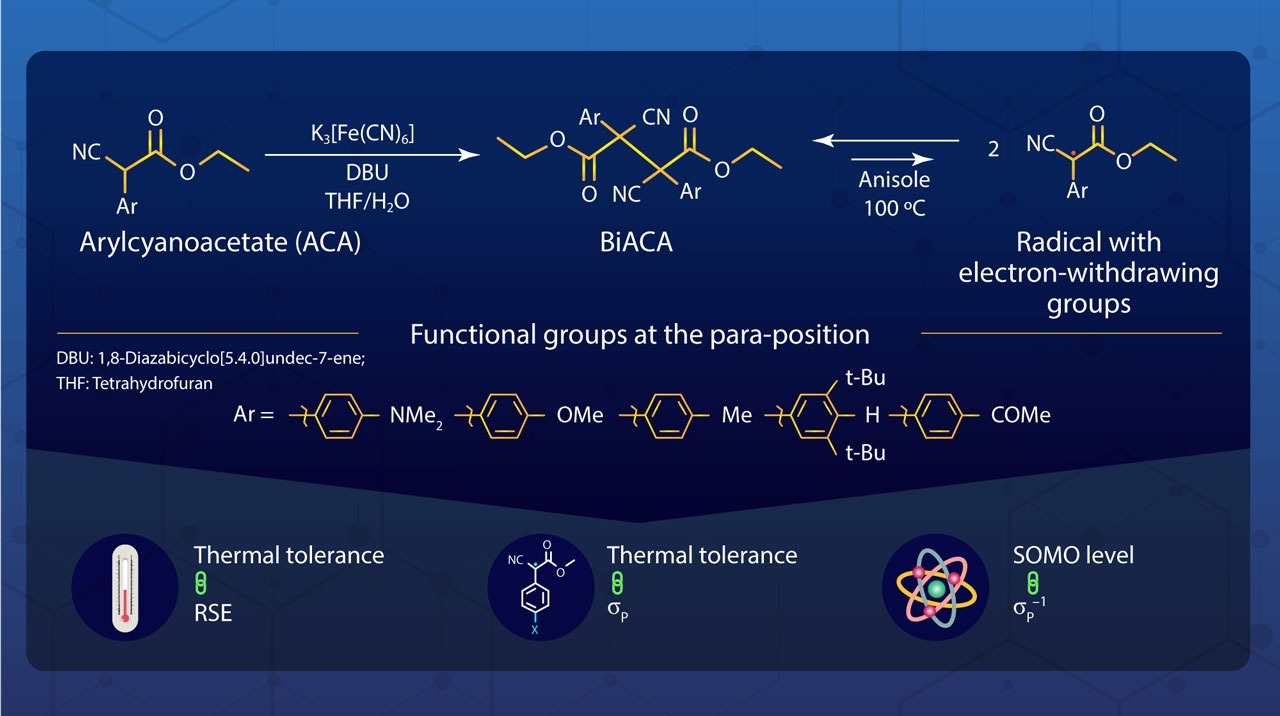Chemical Science and Engineering News
Towards Synthesis of Phenanthridine-Based Pharmaceutical Compounds
A novel synthesis method for producing naturally occurring, biologically active phenanthridine derivates in the lab has been reported by scientists at Tokyo Tech. This approach utilizes difluoromethylborates to produce difluoromethylated phenanthridines. By examining the reaction conditions and uncovering the reaction mechanism, the results of the study pave the way for the development of pharmaceuticals with antitumor and anticancer properties.
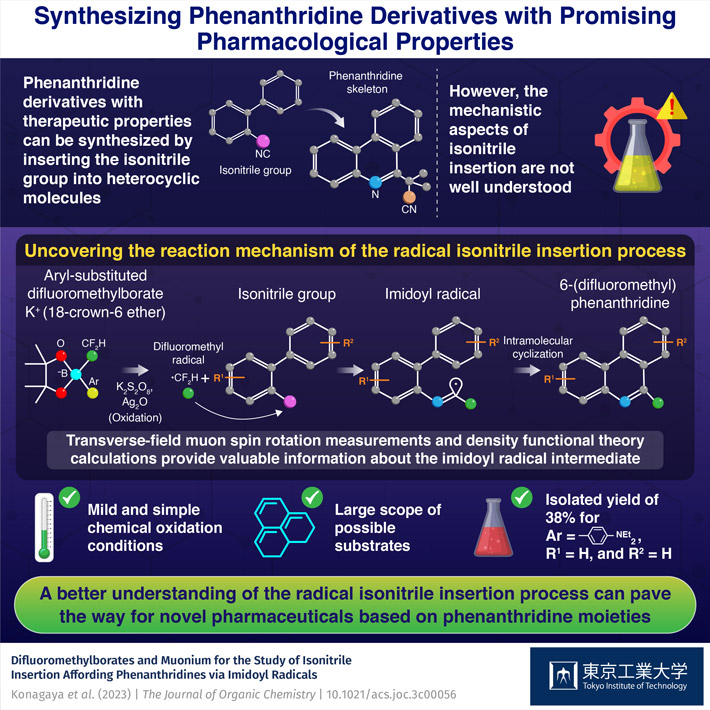
Phenanthridines are heterocyclic compounds consisting of two six-membered benzene rings fused to a six-membered ring containing nitrogen. They are found in many naturally occurring organic compounds known for their anticancer and antitumor properties. Due to their potential medicinal applications, there is a significant interest in synthesizing phenanthridine derivatives in laboratories. A promising synthesis approach involves radical isonitrile insertion to produce imidoyl radical intermediates, which then cyclize to form phenanthridine. However, the exact mechanism of isonitrile insertion is not well understood.
Recently, a team of researchers, led by Associate Professor Shigekazu Ito from Tokyo Institute of Technology (Tokyo Tech), has investigated the use of aryl-substituted difluoromethylborates for synthesizing difluoromethylated phenanthridines. Their study, published in The Journal of Organic Chemistry![]() , assesses the scope of producing pharmaceutically relevant fluorinated phenanthridines from aryl-substituted difluoromethylborates and elucidates the reaction mechanism underlying isonitrile radical addition.
, assesses the scope of producing pharmaceutically relevant fluorinated phenanthridines from aryl-substituted difluoromethylborates and elucidates the reaction mechanism underlying isonitrile radical addition.
"Taking into account the significance of difluoromethylated phenanthridines in drug discovery, it is desirable to develop novel and complementary synthetic methods for producing 6-(difluoromethyl) phenanthridines, especially via radical isonitrile insertion," points out Dr. Ito.
The researchers synthesized 6-(difluoromethyl) phenanthridines by first generating a highly reactive difluoromethyl radical (•CF2H) through the oxidation of aryl-substituted difluoromethylborates. This radical served as the starting point for the isonitrile insertion and cyclization processes within the isonitrile group.
After screening various oxidizing conditions, the researchers identified a combination of silver oxide (Ag2O) and potassium peroxodisulfate (K2S2O8) as ideal initiators for radical isonitrile insertion in 2-isocyano-1,1'-biphenyls. They observed that K2S2O8 oxidizes Ag2O, which, in turn, oxidizes the aryl-substituted difluoromethylborates, leading to the generation of the •CF2H radical. It attaches to the isonitrile group, producing the imidoyl radical, which then undergoes intramolecular cyclization, ultimately leading to the formation of 6-(difluoromethyl) phenanthridine.
The researchers explored various aryl groups in aryl-substituted difluoromethylborates to maximize the yield of 6-(difluoromethyl) phenanthridine. Among the tested aryl groups, p-diethylamino-phenyl-substituted borate was stable and produced the corresponding phenanthridine with a reasonable yield of 53%.
Furthermore, the researchers employed a technique called "transverse-field muon spin rotation" to confirm the reaction mechanism and the presence of the short-lived imidoyl radical. They directed a beam of positive muons (subatomic particles similar to protons but nine times lighter) towards the isonitrile group and carefully observed the changes in their spins. Muons accompanying electrons, called muoniums, preferentially added to the carbon atom of the isonitrile unit, forming an intermediate that subsequently underwent a cyclization process. This observation provided compelling evidence for the existence of the elusive imidoyl radical.
In the future, the team hopes to explore different approaches to generate the difluoromethyl radical for facilitating the production of difluoromethylated phenanthridines. "Besides chemical oxidation, it might be possible to use photocatalytic and electrochemical methods to synthetically generate the difluoromethyl radical from difluoromethylborates," speculates Dr. Ito.
In conclusion, this study presents a highly promising pathway for synthesizing 6-(difluoromethyl) phenanthridines, a breakthrough which holds tremendous potential for drug development.
- Reference
| Authors : | Kakeru Konagaya1, Yu-En Huang1, Kazuki Iwami1, Tetsuya Fujino1, Rikutaro Abe1, Reuben Parchment-Morrison2,3, Kenji M. Kojima3,6, Iain McKenzie3,4,5,*, and Shigekazu Ito1,* |
|---|---|
| Title : | Difluoromethylborates and Muonium for the Study of Isonitrile Insertion Affording Phenanthridines via Imidoyl Radicals |
| Journal : | The Journal of Organic Chemistry |
| DOI : | 10.1021/acs.joc.3c00056 |
| Affiliations : | 1Department of Chemical Science and Engineering, School of Materials and Chemical Technology, Tokyo Institute of Technology 2School of Physics and Astronomy, Cardiff University 3Centre for Molecular and Materials Science, TRIUMF 4Department of Chemistry, Simon Fraser University 5Department of Physics and Astronomy, University of Waterloo 6Stewart Blusson Quantum Matter Institute |
|
* Corresponding authors' emails: iainmckenzie@triumf.ca; ito.s.ao@m.titech.ac.jp |
|
- It's Elementary: Visualizing Molecular Motion of Substituted 9-Phosphaanthracene | Tokyo Tech News
- Fine tuning phosphorous heterocycle materials for organic electronics | Tokyo Tech News
- Ito Laboratory
- Shigekazu Ito | Researcher Finder - Tokyo Tech STAR Search
- Chemical Science and Engineering Graduate Major|Education|Department of Chemical Science and Engineering, School of Materials and Chemical Technology
- Chemical Science and Engineering Undergraduate Major|Education|Department of Chemical Science and Engineering, School of Materials and Chemical Technology
- Latest Research News
School of Materials and Chemical Technology
—Encompassing the Disciplines of Science—
Information on School of Materials and Chemical Technology inaugurated in April 2016
Further Information
Associate Professor Shigekazu Ito
Department of Chemical Science and Engineering,
School of Materials and Chemical Technology,
Tokyo Institute of Technology
Email ito.s.ao@m.titech.ac.jp
-

-
- Department of Architecture
and Building Engineering - Department of Civil
and Environmental Engineering - Department of Transdisciplinary
Science and Engineering - Department of Social
and Human Sciences - Department of Technology and Innovation Management Professional master's degree program /Department of Innovation Science
- Department of Architecture

